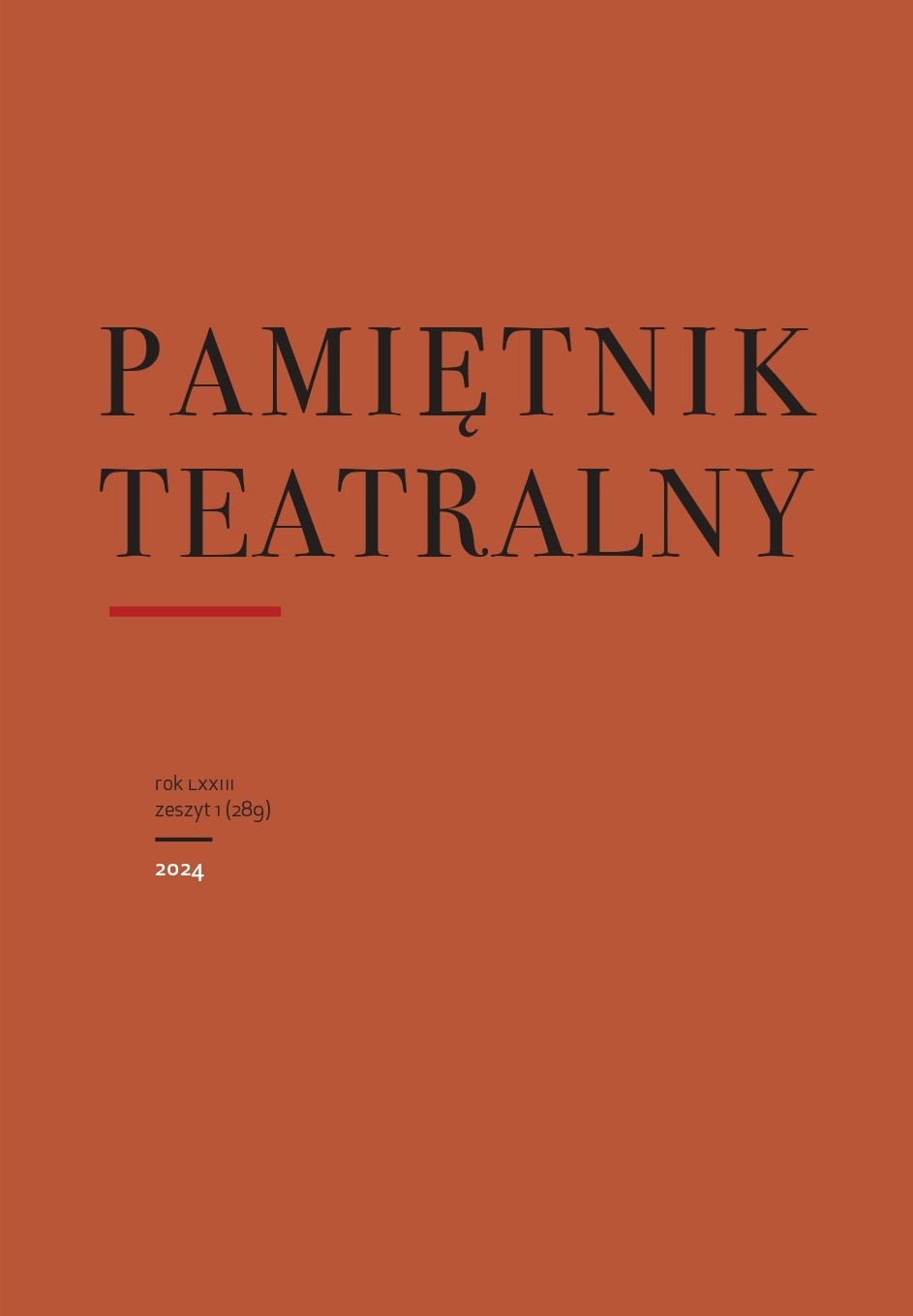A Spectacle of Sovereignty: The Coronation Celebrations of Queen Elizabeth I
Emilia Olechnowicz
Institute of Art of the Polish Academy of Sciences (Poland)
https://orcid.org/0000-0003-4874-3471
Abstract
The coronation ceremonies of Queen Elizabeth I in 1559, as all ceremonies regarding transfer of royal power, are an interesting example of what Victor Turner called “social drama.” Elizabeth was highly aware of the inextricable bond between statecraft and stagecraft. The entry progress through the city of London and the coronation were the first public occasions for the queen to present her public persona with theatrical means, through the use of decorations, attributes, gestures, and costumes. The intention behind the ceremonial entry was both to laud the ascending queen and to indicate her government’s policies in the wake of a political crisis following the death of Queen Mary. Allegorical spectacles accompanying the entry comprised a unified programme presenting Elizabeth as the opposite of her predecessor. The purpose of the coronation ceremonies, on the other hand, was quite the opposite: each of its features and rituals was meant to convey and emphasise the continuity and enduring nature of monarchy. The ruler ascending the throne took on a new identity and a new body. In line with the Tudor doctrine of “the king’s two bodies,” described by Ernst Kantorowicz, at coronation the monarch relinquished their individual identity to become a super-individual King who was immortal. Thus, the festivities and ceremonies inaugurating Elizabeth’s rule had a twofold nature, and the two main elements were complementary to each other: they presented the queen as a “new hope” of the Protestant England and as a rightful heir to the throne not just worthy of her predecessors but rather identical with them.
Keywords:
Queen Elizabeth I, coronation, royal iconography, Elizabethan courtly entertainment, King's Two Bodies, Queenship, Elizabethan ageReferences
Arnold, J. (1988). Queen Elizabeth’s Wardrobe Unlock’d. Leeds
Google Scholar
Axton, M. (1977). The Queen’s Two Bodies: Drama and the Elizabethan Succession. London
Google Scholar
Bayne, C.G. (1907a). The Coronation of Queen Elizabeth, The English Historical Review, 22, 650–673
DOI: https://doi.org/10.1093/ehr/XXII.LXXXVIII.650
Google Scholar
Bayne, C.G. (1907b). The Coronation of Queen Elizabeth, The English Historical Review, 24, 322–323
DOI: https://doi.org/10.1093/ehr/XXIV.XCIV.322
Google Scholar
Bayne, C.G. (1907c). The Coronation of Queen Elizabeth, The English Historical Review, 25, 550–553
DOI: https://doi.org/10.1093/ehr/XXV.XCIX.550
Google Scholar
Berengton, D.M. (1978). Elizabeth’s Coronation Entry (1559): New Manuscript Evidence, English Literary Renaissance, 1, 3–8
DOI: https://doi.org/10.1111/j.1475-6757.1978.tb01379.x
Google Scholar
Bloch, M. (1998). Królowie cudotwórcy: Studium na temat nadprzyrodzonego charakteru przypisywanego władzy królewskiej zwłaszcza we Francji i w Anglii. (J.M. Kłoczowski, tłum.). Warszawa
Google Scholar
Frye, S. (1993). Elizabeth I: the Competition for Representation. Oxford
Google Scholar
Gieysztor, A. (1978). Spektakl i liturgia – polska koronacja królewska. W: B. Geremek (red.). Kultura elitarna a kultura masowa w Polsce późnego średniowiecza (s. 9–23). Wrocław
Google Scholar
Hoak, D. (2002). A Tudor Deborah? The Coronation of Elizabeth I, Parliament, and the Problem of Female Rule. In C. Highley, & J.N. King (eds.). John Foxe and his World (pp. 73–88). Aldershot
Google Scholar
Haugaard, W. (1968). The Coronation of Elizabeth I, Journal of Ecclesiastical History, 19, 161–170.
DOI: https://doi.org/10.1017/S0022046900056876
Google Scholar
Hunt, A. (2008). The Drama of Coronation. Medieval Ceremony in Early Modern England. Cambridge
DOI: https://doi.org/10.1017/CBO9780511485411
Google Scholar
Kantorowicz, E., (2007). Dwa ciała króla: Studium ze średniowiecznej teologii politycznej. (M. Michalski, A. Krawiec, tłum.). Warszawa
Google Scholar
King, J. (1989). Tudor Royal Iconography: Literature and Art in an Age of Religious Crisis, Princeton
Google Scholar
Lockhart Ross, G. (1908). Il Schifanoya’s Account of the Coronation of Queen Elizabeth, English Historical Review, 23, 533–354
DOI: https://doi.org/10.1093/ehr/XXIII.XCI.533
Google Scholar
McLaren, A. (1999). Political Culture in the Reign of Elizabeth I: Queen and Commonwealth. 1558–1585. Cambridge
Google Scholar
Montrose, L. (2006). The Subject of Elizabeth: Authority, Gender, and Representation, Chicago
Google Scholar
Olechnowicz, E. (2017). The Queen’s Two Faces: The Portraiture of Elizabeth I of England. In K. Mroziewicz, & A. Sroczyński (eds.), Premodern Rulership and Contemporary Political Power: The King's Body Never Dies (pp. 217-246). Amsterdam. https://doi.org/10.2307/j.ctt1zkjzmx.12
Google Scholar
Rowse, A.L. (1953). An Elizabethan Garland. London
Google Scholar
Whitelock, A., Hunt, A. (2010). Tudor Queenship: the Reigns of Mary and Elizabeth. Basingstoke. https://doi.org/10.1057/9780230111950
DOI: https://doi.org/10.1057/9780230111950
Google Scholar
Wilson, H.A. (1908). The Coronation of Queen Elizabeth, The English Historical Review, 23, 87–91
DOI: https://doi.org/10.1093/ehr/XXIII.LXXXIX.87
Google Scholar
Authors
Emilia OlechnowiczInstitute of Art of the Polish Academy of Sciences Poland
https://orcid.org/0000-0003-4874-3471
Statistics
Abstract views: 768PDF downloads: 453
License
Copyright (c) 2018 Emilia Olechnowicz

This work is licensed under a Creative Commons Attribution-NonCommercial-NoDerivatives 4.0 International License.
The author grants a royalty-free nonexclusive license (CC BY 4.0) to use the article in Pamiętnik Teatralny, retains full copyright, and agrees to identify the work as first having been published in Pamiętnik Teatralny should it be published or used again (download licence agreement). By submitting an article the author agrees to make it available under CC BY 4.0 license.
From issue 1/2018 to 3/2022 all articles were published under a Creative Commons license CC BY-NC-ND 4.0. During this period the authors granted a royalty-free nonexclusive license (CC BY-ND 4.0) to use their article in Pamiętnik Teatralny, retained full copyright, and agreed to identify the work as first having been published in our journal should it be published or used again.









